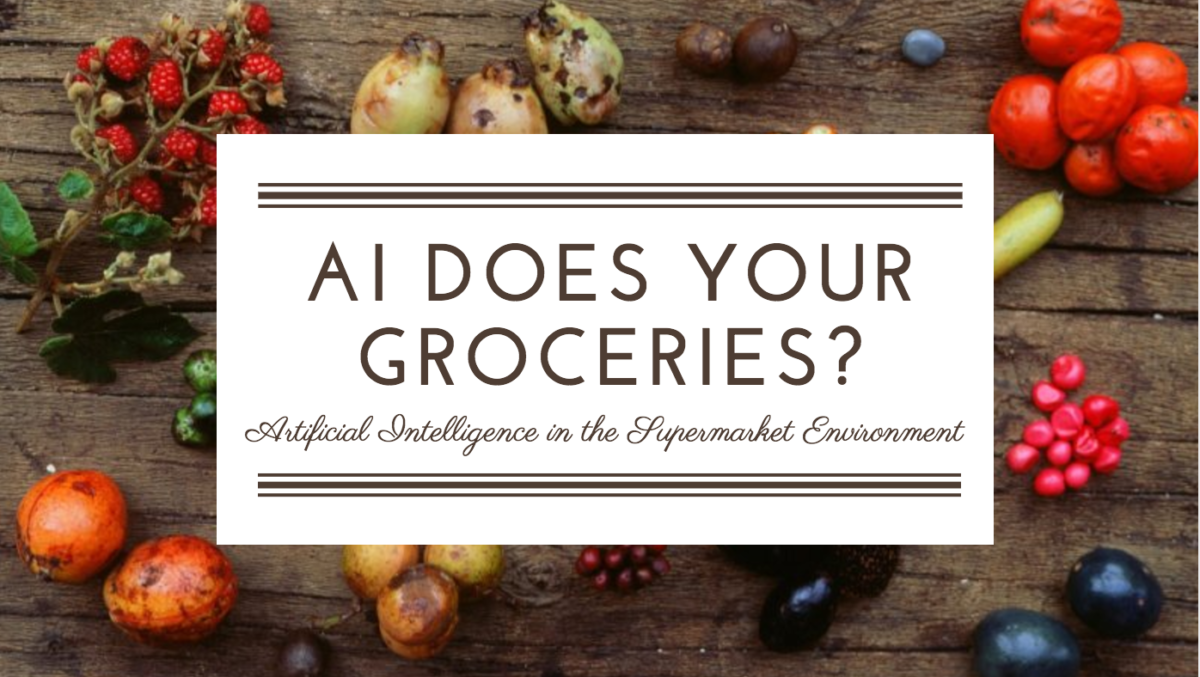Imagine how much time it would save you if you could just walk into the supermarket, grab the groceries you need, go your own way again. No check-out line, no need for paying on the spot, no packing from your basket into your bag. Sounds too futuristic? Such supermarkets already exist! Amazon introduced the Amazon Go supermarkets, where there are no cashiers and consumers just take the products they need and walk out (Alba, 2016). The consumers are charged through their amazon account after they leave the store (Alba, 2016).

It seems that more and more businesses are moving to a digitally driven environment. If you thought Amazon Go was too futuristic, you will be thunderstruck by Moby, a Japanese 24-hour grocery store with no staff, check-out register, or even fixed location (Peters, 2017). That is right, the grocery store moves itself around and even is designed to visit the warehouse to restock – all by itself (Peters, 2017).
With these technological developments, everyday supermarkets may face serious problems if they do not invest in similar practices. It is too big of a step to implement all the artificial intelligence and machine learning systems Amazon has installed in their Amazon Go shops at once. However, supermarkets are starting to introduce more and more digital driven practices in their environment. An example of a supermarket that started doing so is Albert Heijn, a Dutch supermarket chain that exists for over a century already. They already have a website and mobile application where consumers can, among other things, order products and receive personal discounts, based on their prior buying behavior (Albert Heijn, 2017). They were also the first in The Netherlands to introduce digital shopping lists, meaning consumers can save either spoken or written messages to the list – which has the form of a fridge magnet – or scan barcodes of products, which would then appear on their shopping list in the Albert Heijn App (ESM, 2017).

The above examples are excellent illustrations that artificial intelligence and machine learning are not just fancy technologies used in fancy businesses. They also illustrate that if everyday grocery stores choose to complete disregard these developments, they might end up in big trouble. The ‘new way of grocery shopping’ is much more efficient and time-saving.
No worries – unless you really enjoy spending time in the grocery store, then do worry – better times are coming. Maybe in a few years we will be visited by the grocery stores themselves, instead of the other way around. What do you think?
Sources:
ESM (2017). Albert Heijn Trials Hiku Smart Shopping Gadget. Accessed online through: https://www.esmmagazine.com/albert-heijn-trials-smart-shopping-list-gadget-hiku/41736
Alba, D. (2016). Only Amazon Could Make a Checkout-Free Grocery Store a Reality. Accessed online through: https://www.wired.com/2016/12/amazon-go-grocery-store/
Albert Heijn (2017). Appie App: Alles over de vernieuwede Appie App. Accessed online through: https://www.ah.nl/appie-app
Peters, A. (2017). The Grocery Store Of The Future Is Mobile, Self-Driving, and Run By AI. Accessed online through: https://www.fastcompany.com/40429419/this-tiny-grocery-store-is-mobile-self-driving-and-run-by-ai.

